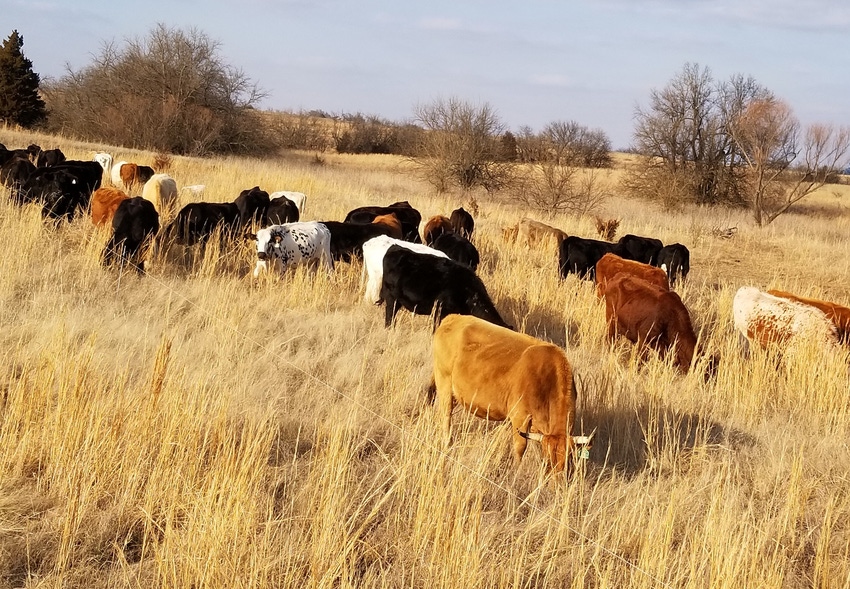
I spent a couple of years playing high school football. Well, the truth is I practiced in the heat of August twice daily. On game nights starting in September I dressed out in a game uniform, rode the bus, went to the field and warmed up. Then I spent most of four quarters on the bench watching the game and learning new four-letter words from the coach. I’d been introduced to most of them on the practice field. I later often rehearsed them when working cattle.
Getting warmed up and then cooling off makes you stiff and worthless. The pretty girls are seldom impressed. The day I hung up my football uniform was a good day. I replaced the bench with a profitable job. It paid better.
An inactive full bench is not healthy or a good deal. I like cattle that work. Actually, I love cattle that do most all of the work. It has been nearly 35 years since I’ve owned cattle parked in a yard, sitting on or laying around the bench.
We used to be in the material-handling business. The best part was getting the feed emptied on the fence line and returning to a warm truck cab and failing to get stuck. Profits were never anything to brag about. The cattle mostly did well. But all they had to do was eat, drink, poop and lay down. They stretched when they got up.
Recently I reviewed a paper written in 1898 by a USDA agronomist by the name of Jared G. Smith. The print was small and he wrote 46 pages. He made a bunch of statements that have since been proven wrong. But it was a worthwhile read.
Smith said that cattle don’t need to be forced to travel more than 2.5 miles to water. Lately I’ve heard researchers say that cattle will travel as individuals instead of as a herd if the water is located within 800 feet.
In 1898 there weren’t any cost-sharing government programs and in Texas and most of the East and the Midwest there was not any “free grass” or “open range.” There was a shortage of water since the French, English and Russian trappers and the Indians had trapped out the beaver and eliminated their water reservoirs more than a century earlier. Truth is that the predators were mostly gone before 1895. There were lots of cattle walking up to five miles to water. The range was in mostly rough shape but the carrying capacity of most of Texas and New Mexico was still two or three times most present levels. Low-impedance electrical energizers, electric fencing, four-wheelers, step-in posts, polybraid and reels weren’t around. Cattle were worth maybe $20 a head.
The bench was mostly empty but the playing field (stocking rate) in 1898 was only 50% as full as compared to 1882. The best plants were mostly gone. Cattle need water and will stay rather close to good water if it is easy. Truth is that they can quite easily walk a mile or two if needed without any harm being done. But they often fail to do so. Shucks, they are lazy. If water was available nearly everywhere as it is was when the beavers were in big numbers then it likely would not have been an issue. But the result is what we commonly see today. Areas of overgrazing and biomass diversity and quality loss and areas of brush and weed encroachment from under grazing are common on the same place. In other words there is seldom real boom and bust grazing. Actually there is bust without boom and boom without bust. Think about this statement for a while.
This winter I’ve been getting calls about the poor quality of late-summer and fall-grown warm-season grasses, legumes and forbs. The producers had ample moisture and there was a bunch of late-season growth. The bench seemed to be full but it emptied quickly in January with more moisture and warm temperatures. Forage quality has been low. The fact is most of what we’ve witnessed was predictable and we should have been better prepared.
Highly mineralized climax grasses tend to hold quality into the winter for longer periods. But the quality periods shorten in high moisture and fast growth falls and warm wet winters. This defines much of the South. The answer in our environment is:
Soil life and mineralization. (Calcium is usually No. 1.)
Huge plant diversity. (The south should have lots of different plants.)
Growth of grass and forbs during the drier periods of the mid-summer.
Monitoring, planning and the strategic use of supplement fed to the cattle. The key is to start early and stay late.
Growth of green in the understory. Diverse, recovering pasture in our country contains a bunch of green in winter.
The natural model is yielding a good amount of green under our standing forage. In mid-February last year, for example, we had several inches of broadleaf plants, 8- to 12-inch fescue, four-inch bluegrass and wild barley and some ryegrass. The cattle are staying full on the dry standing tall forage and supplementing protein with the green. A little energy supplement and their work ethic and daily moves keeps them heading forward. This kind of quality pastures require boom and bust management. There is not a lot in nature that’s kind and gentle. Something is normally ready to take your space. Using it at the right time prevents losing it. Using it prematurely or too late can take it out. Time and timing are important.
Hopefully our planning, monitoring and execution loaded the bench to the right level. It needs to be mostly empty in early May around here. By mid to late May it’s time to start planning for next winter.
The opinions of the author are not necessarily those of Beef Producer or Farm Progress.
About the Author(s)
You May Also Like






